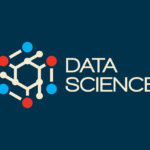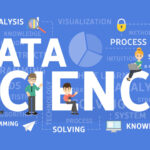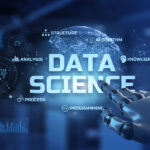In today’s fast-paced business environment, organizations are continuously seeking ways to stay ahead of the competition and make smarter, data-driven decisions. With the advent of digital technologies, businesses now have access to vast amounts of data, but the challenge lies in extracting actionable insights from it. This is where data science comes into play.
Data science involves the use of advanced analytics techniques, machine learning, statistical methods, and algorithms to analyze and interpret large datasets. By leveraging data science, businesses can make more informed decisions, predict trends, optimize processes, and ultimately drive growth.
This article explores how data science is transforming business decision-making, its key components, and practical applications across various industries. It will also highlight the challenges and the future potential of using data science in business.
1. What is Data Science?
Data science is a multidisciplinary field that combines statistics, computer science, mathematics, and domain expertise to extract meaningful insights from complex and structured datasets. Data science involves a range of activities including data collection, cleaning, analysis, and interpretation, with the ultimate goal of using data to inform strategic decisions.
The role of a data scientist is to turn raw data into actionable insights by:
- Cleaning and organizing data to ensure its accuracy and reliability.
- Applying statistical models and machine learning algorithms to identify patterns and predict outcomes.
- Visualizing data to communicate findings in a clear and accessible way.
- Providing recommendations based on data-driven insights to guide business decisions.
In business, data science can help improve a variety of processes such as customer acquisition, product development, marketing strategies, and operational efficiency.
2. The Role of Data Science in Business Decision-Making
Incorporating data science into business decision-making allows companies to move away from gut-feeling decisions and embrace a more systematic, evidence-based approach. By analyzing historical and real-time data, businesses can make predictions and optimize decision-making processes to drive positive outcomes.
Here’s how data science plays a pivotal role in business decision-making:
a. Data-Driven Insights for Strategic Planning
Strategic planning in business typically involves long-term goals, market forecasting, and resource allocation. By utilizing data science, businesses can analyze historical trends, competitor performance, and consumer behavior to make better predictions about future market developments. This enables decision-makers to make more accurate and well-informed decisions about their business strategy.
For example:
- Market Analysis: Businesses can use data science techniques to analyze consumer demographics, purchasing patterns, and emerging market trends, which can help them identify new opportunities or areas for improvement.
- Financial Forecasting: Data science can be used to predict financial outcomes, such as revenue growth or market expansion, by analyzing past financial data and external economic factors.
b. Predictive Analytics for Risk Management
Predictive analytics is one of the most powerful tools in data science for business. By building predictive models based on historical data, businesses can forecast potential risks, such as financial downturns, supply chain disruptions, or market shifts. This enables organizations to implement risk management strategies proactively.
For instance, companies in the finance sector use predictive models to assess the risk of loan defaults or fraudulent activities. Similarly, in manufacturing, predictive analytics can be used to anticipate equipment breakdowns, reducing downtime and preventing costly repairs.
c. Personalizing Customer Experience
Customer satisfaction is key to the success of any business. Data science enables businesses to offer a highly personalized experience to their customers by analyzing data from a variety of touchpoints, such as websites, social media, and customer service interactions.
By analyzing customer behavior patterns, businesses can:
- Segment customers based on preferences, purchase history, and demographics.
- Personalize marketing campaigns to target specific customer segments with tailored messages and offers.
- Predict customer needs and recommend relevant products or services based on past interactions.
For example, e-commerce platforms like Amazon or Netflix use recommendation algorithms based on past behavior to suggest products or media content to users, driving higher engagement and sales.
3. Key Components of Data Science for Business
To successfully implement data science in business, companies need to focus on several key components that drive the process of extracting insights from data:
a. Data Collection and Management
The first step in data science is to gather data from various sources. In business, this data can come from internal sources such as customer databases, sales records, and inventory management systems, as well as external sources like social media, third-party market research, and economic indicators.
Data management is crucial because raw data often needs to be cleaned and transformed before analysis. Proper data storage, governance, and security protocols must also be established to ensure that data is reliable and compliant with regulations.
b. Data Analysis and Modeling
Once the data is collected and cleaned, it must be analyzed using various statistical methods and machine learning algorithms. The type of analysis used will depend on the business problem at hand. Common techniques include:
- Descriptive Analytics: Summarizing historical data to understand past performance.
- Predictive Analytics: Using statistical models and machine learning to forecast future trends.
- Prescriptive Analytics: Providing recommendations on how to achieve specific business objectives.
- Text Analytics: Analyzing unstructured data such as social media posts or customer reviews to gain insights into customer sentiments.
Machine learning algorithms, such as decision trees, neural networks, and support vector machines, are often employed to identify patterns and make predictions.
c. Data Visualization
Data visualization plays a crucial role in communicating insights derived from data. Data scientists use charts, graphs, and dashboards to present complex results in an easy-to-understand format. Visualizing data helps decision-makers grasp trends and patterns more quickly and makes it easier to communicate findings to stakeholders.
Tools like Tableau, Power BI, and Google Data Studio are commonly used to create interactive dashboards and reports that display key performance indicators (KPIs) in real-time.
4. Practical Applications of Data Science in Business
The applications of data science in business are vast and varied, spanning across industries and sectors. Below are some of the key areas where data science is making a significant impact:
a. Marketing and Sales Optimization
Data science is widely used in marketing and sales to improve customer targeting, optimize pricing, and measure campaign performance. By analyzing customer data and past sales trends, businesses can:
- Identify high-value customers: Predict which customers are most likely to make repeat purchases or respond to a marketing campaign.
- Optimize pricing strategies: Use machine learning algorithms to set dynamic prices based on market conditions, competitor pricing, and customer demand.
- Measure ROI: Analyze the effectiveness of marketing campaigns, optimizing budgets by identifying which channels yield the best results.
b. Supply Chain and Inventory Management
IoT sensors, predictive analytics, and optimization algorithms are used in supply chain management to forecast demand, track inventory, and minimize disruptions. Data science can help businesses:
- Predict demand: Forecast future demand for products based on historical data and external factors such as seasonality or economic trends.
- Optimize inventory levels: Use data to maintain optimal inventory levels, preventing overstocking or stockouts.
- Improve logistics: Analyze transportation routes and optimize delivery schedules to reduce costs and improve efficiency.
c. Human Resources and Talent Management
In human resources, data science is used to improve hiring decisions, monitor employee performance, and boost retention rates. By analyzing data from resumes, interviews, and performance reviews, companies can:
- Hire the right candidates: Use machine learning algorithms to analyze resumes and predict which candidates are most likely to succeed in a given role.
- Optimize training programs: Analyze employee performance data to determine where training efforts are needed and identify areas for improvement.
- Predict turnover: Analyze employee satisfaction and engagement data to predict which employees may leave the company and take proactive measures to retain them.
d. Fraud Detection and Prevention
In industries like banking, insurance, and e-commerce, data science plays a crucial role in identifying fraudulent activities. By analyzing patterns in transaction data, businesses can:
- Detect anomalies: Identify unusual behavior or transactions that may indicate fraud.
- Prevent financial losses: Use machine learning models to continuously monitor and flag potential fraudulent activity in real-time.
- Improve security: Enhance fraud prevention measures by analyzing historical data to better understand fraudsters’ tactics.
5. Challenges in Implementing Data Science in Business
While the benefits of data science for business are clear, there are several challenges that companies face when trying to implement data science strategies:
a. Data Quality and Accessibility
Data quality is essential for accurate analysis. If the data is incomplete, inaccurate, or outdated, the insights generated will be unreliable. Additionally, businesses often have data scattered across multiple departments and systems, making it difficult to access and integrate into a central data repository.
b. Lack of Skilled Talent
The demand for data scientists has skyrocketed in recent years, and many organizations struggle to find professionals with the right skill set. Data science requires a blend of technical, statistical, and domain-specific knowledge, and the shortage of skilled professionals can be a barrier to successful implementation.
c. Data Privacy and Compliance
With the rise of data collection comes the responsibility to handle sensitive customer data appropriately. Privacy concerns and data protection regulations, such as the General Data Protection Regulation (GDPR), make it essential for businesses to ensure they are compliant with data privacy laws.
6. Conclusion
Data science is revolutionizing the way businesses make decisions, enabling them to optimize processes, enhance customer experiences, and drive growth. By harnessing the power of data, businesses can uncover valuable insights that guide strategic initiatives and improve performance across a range of functions.
As data science continues to evolve, its applications will only grow, making it a critical tool for organizations looking to remain competitive in an increasingly data-driven world. However, businesses must address challenges related to data quality, talent acquisition, and privacy to fully realize the potential of data science.
Key Takeaways:
- Data science is the application of advanced analytics, machine learning, and statistical techniques to extract insights from data to drive better business decisions.
- It plays a critical role in strategic planning, predictive analytics, customer personalization, and risk management.
- Key components of data science include data collection, analysis, and visualization, all aimed at improving decision-making.
- Practical applications in business span across marketing, sales, supply chain, HR, fraud detection, and more.
- Challenges in implementing data science include data quality, talent shortages, and data privacy concerns.




